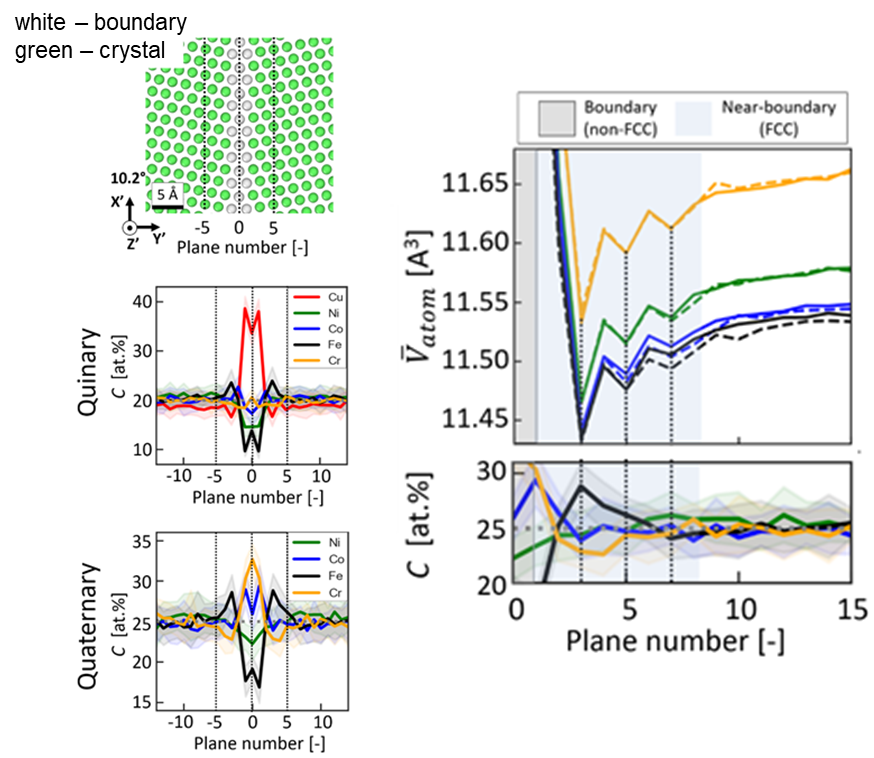2021 IRG-1: Large Variations and Chemistry in the Near-Boundary Region
Grain boundaries, interfaces between two crystals inside a material, are important defects which can dramatically alter material response because the structure of the boundary is different from the bulk crystalline region.
Using a unique set of metals called multi-principal element alloys (MPEAs), IRG-1 has shown that grain boundaries can have multiple levels of local structural and chemical heterogeneities that far surpass what was previously hypothesized. Not only does the boundary itself serve as a sink for dopants due to the local defects, but a thicker, near-boundary region has reduced free volume compared to the bulk and can be enriched in other atomic elements.
While the team discovered these unique near-boundary regions in MPEAs, they have shown that these features exist in simpler materials too, opening the door for a new yet widely-applicable materials design concept.
UCI MRSEC 2011967 IRG-1 Rupert Near-boundary segregation zones.pptx

MJ McCarthy, D Apelian, WJ Bowman, H Hahn, X Pan, TJ Rupert (University of California, Irvine)
J Luo, SP Ong (University of California, San Diego)